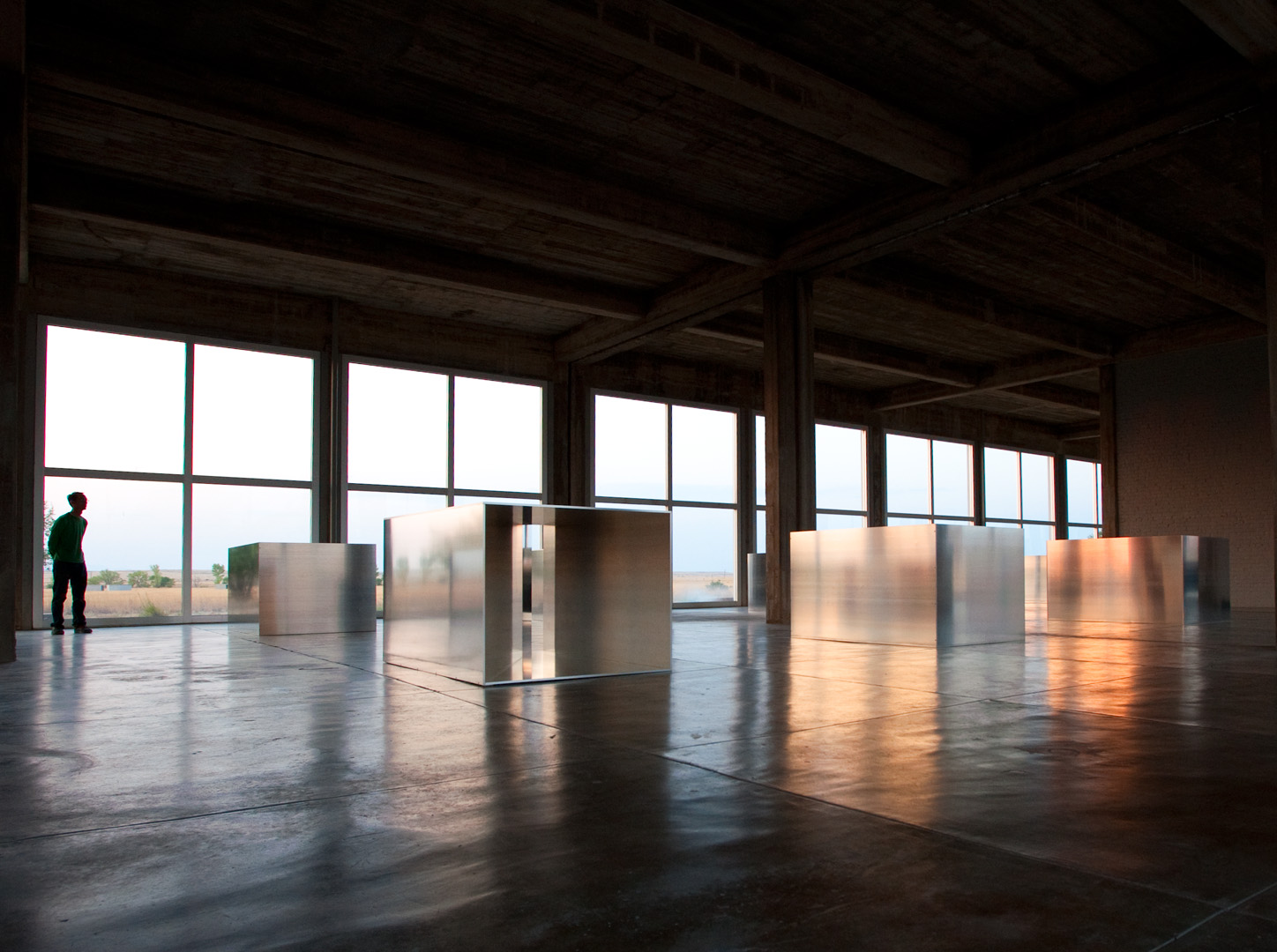 Donald Judd, 100 untitled works in mill aluminum, 1982-1986, aluminum, 41 x 51 x 72 inches each, Chinati Foundation, Marfa, TX, Photo by OneEighteen via Flickr, Creative Commons Attribution-NonCommercial 2.0 Generic License.
Donald Judd, 100 untitled works in mill aluminum, 1982-1986, aluminum, 41 x 51 x 72 inches each, Chinati Foundation, Marfa, TX, Photo by OneEighteen via Flickr, Creative Commons Attribution-NonCommercial 2.0 Generic License.
Paul Emsley, the artist who painted the portrait of Kate Middleton that was recently unveiled to the public and is now hanging in the National Portrait Gallery in London, felt a need make the statement that the painting doesn’t photograph well. The poor guy simply had to defend himself; most people hate the portrait and he has suffered a great deal of ridicule and abuse as a result.
Personally, I don’t think the portrait is successful. From what I understand, he decided late in the game to include the slight smile and he did so without changing the rest of Kate’s face and that resulted in the lack of animation in her eyes, which creates the overall impression that she is smirking. Still, people have been rather excessive with their criticism of this painting. I imagine that this is a real possibility when one paints a portrait of such a beloved public figure.
Nevertheless, the artist made a very important point in his statement: you really have to see a work of art in person before you can make a judgment.
Last weekend, my husband and I visited the Chinati Foundation in Marfa, TX where, for the first time, we saw in person Donald Judd’s 100 untitled works in mill aluminum that are installed in two former artillery sheds. We both had seen photographs of the sculptures many, many times before, yet we were unprepared for the experience of walking around the space, “interacting” with those works of art. We thought we knew them, and we found we didn’t – not by a long shot.
Judd’s 100 untitled sculptures have identical outer dimensions (41 x 51 x 72 inches), but they are all different inside, having two or three panels placed along different sides or angles. The light coming through the windows that Judd installed in the artillery sheds, reflects off the surfaces of the sculptures so that sometimes they reflect the sunlight while other times the surfaces look as translucent as glass. And all of this changes as you walk around the sculpture. Panels appear and disappear. Light emerges from blackness and then fades away again. The sculptures really are magnificent.
In this Digital Age, we now have unprecedented access to art to the great advantage and benefit of both museums and the general public. A recent article on CNN.com remarks on how museums are slowly but surely responding to the demand for online educational information. It’s exciting and it’s very important because there is a real need for culture-based education.
The article also makes the point that nothing can ever replace the experience of standing in front of a Rothko.
Just remember that.

